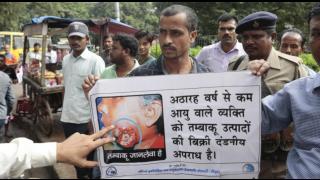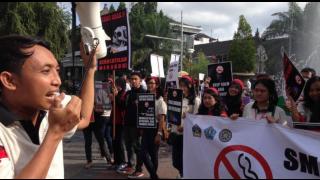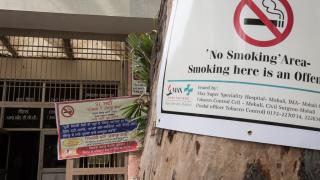
GOAL: Effective coordinated enforcement actions and inspections with appropriate corrective actions taken for businesses and individuals.
Effective enforcement actions and inspections require coordination among multiple agencies, engagement with stakeholders, strategy and planning. Officer must be well-trained with appropriate authority and be empowered to take appropriate corrective actions for businesses and individuals.
Guidance on enforcement actions
Key elements of enforcement actions include:
Use the navigation below to explore this page and find guidance and top resources on enforcement actions.
Coordination Mechanism
Coordination is key among all stakeholders involved in direct enforcement of the law.
Coordination and planning may be undertaken by the same Task Force that helped pass the law, or it may be a subset of it with members more closely linked to enforcement action.
Where one agency has overall accountability for the law, they may be required to issue instruction letters to other stakeholders informing them of their responsibility to conduct inspections and participate in coordination meetings.
The coordinating group should:
- conduct regular planning meetings
- share inspection and monitoring data
- report results to political leaders and the general public
- set strategic goals and targets.
Strategy and Planning
Enforcement agencies should have clear plans for conducting regular monitoring and inspections under the law.
Plans should align with any broader strategy set in the planning phase, and any other relevant health or agency strategies. Criteria for prioritising specific venue types, retailer areas, etc. should be laid out and communicated clearly by the agencies.
The strategy on penalties should be clear, including whether the emphasis is on education and correction, or punitive steps, within the confines of the law.
Enforcement actions should tie-in with other implementation activities, such as targeted mass media campaigns or sector-specific educational outreach. Where appropriate, media should be included in enforcement activities and reporting. Important cases, such as high-profile persistent violators, should be planned for.
Protocols and Inspections
Depending on the local context, the law being enforced and the specific provisions, there are a range of different inspection types:
- Proactive: inspectors conduct regular, planned compliance monitoring of sites, which may be part of other routine inspections such as food safety.
- Reactive: inspectors respond to a complaint or tip-off
- Overt: inspectors announce themselves on arrival before conducting compliance checks
- Covert: inspectors conduct their compliance checks without identifying themselves, often undercover. They may reveal themselves at the end of their inspection or they may return to the premises at a later date with the findings.
Depending on the law and the local context, officers should be trained and prepared for all appropriate types and how and when to utilise them.
Penalties
Inspectors should be trained on what constitutes a violation under the law, what sanctions are applicable and what their exact powers are to issue them.
In addition, they need to know what evidence must be gathered, how it should be preserved and what procedures need to be followed for successful application of the penalty and communication with the violators.
Inspectors should be equipped with all the relevant documentation and equipment for gathering evidence in the instance a complaint must be made.
featured resources
Smoke-free Air: Law Enforcement Lessons from the Field
This toolkit from the Global Smoke-free Partnership draws on the experience of jurisdictions that have successfully implemented strong smoke-free laws, and captures some of the important lessons common to these efforts.
Enforcement of Tobacco Control Law: A Guide to the Basics
This booklet provides an overview of key smokefree enforcement issues and sources of more information- because the authors live in Bangladesh this booklet draws heavily on examples from that country, but most of the issues are universal and approaches should easily be adaptable.
Examples of Smokefree Implementation Protocols
Examples of smokefree protocols to support the implementation of smokefree policies.
Implementation Areas
Legislation
Effective tobacco control laws are passed by a legislative body to protect the public from the harms of tobacco use.
Regulations
Issued by an executive authority or government regulatory agency, a regulation (or rule, order, ordinance or guideline) explains how to implement a specific law and its related penalties and sanctions.
Countering Industry Interference
Extreme vigilance is the only way to counter the tobacco industry’s attempts to interfere with and muddy public health policies.
Coordination and Planning
Multiple government agencies are frequently tasked with tobacco control law implementation and enforcement. Effective coordination and communication between them is key.
Stakeholder mobilization
Tobacco control law compliance depends on diverse stakeholders with both the capacity and commitment to effectively implement and enforce them.
Public communications
Public education campaigns enumerating the benefits of tobacco control legislation help build consensus and facilitate smooth implementation.
Monitoring and Evaluation
A plan to assess progress and evaluate impact must precede implementation.
Compliance
Tobacco control law compliance increases the percentage of the population that is protected from tobacco harms.








